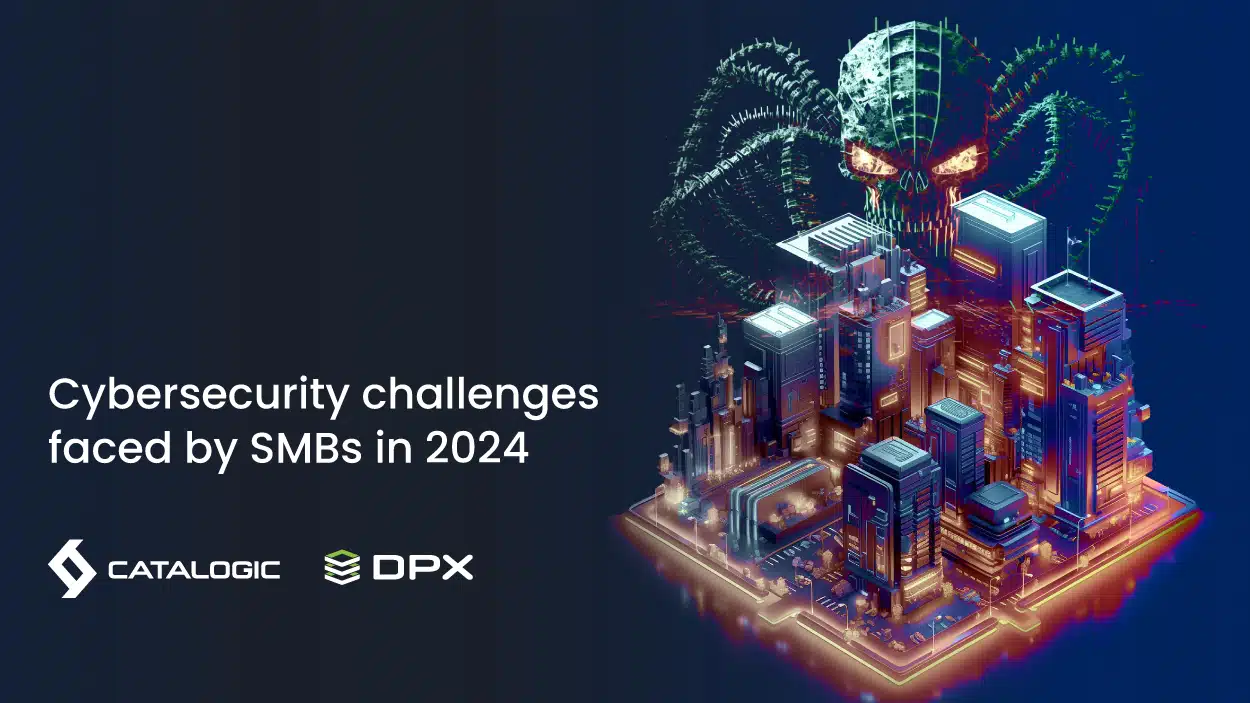Ransomware Threats in 2024: SMB Cybersecurity

As we navigate through 2024, small and medium-sized businesses (SMBs) are defending against an increasingly intricate and technical ransomware threat landscape. Gone are the days when human error was the primary vulnerability. Today, ransomware attacks have morphed into a sophisticated arsenal of tools that exploit technical vulnerabilities, shifting the cybersecurity battleground for SMBs.
Ransomware in 2024: The Evolution of Cyberattacks
Historically, human error was often the weakest link in cybersecurity, with social engineering tactics like phishing being the primary vector for ransomware attacks. Today, the cyber threat landscape has transformed.
Ransomware has evolved from a blunt instrument of data lockdown to a multifaceted threat that employs data theft, extortion, and Ransomware-as-a-Service (RaaS) models to maximize its impact. The democratization of cybercrime through the RaaS model has led to a surge in ransomware attacks, particularly against small businesses.
These businesses, often lacking the robust security measures of larger enterprises, have become prime targets for ransomware gangs. With 66% of SMBs reporting that they had experienced ransomware attacks, the statistics from 2023 paint a somber picture. The consequences of such cyberattacks are severe, with many SMBs unable to operate during an attack and a significant number facing closure within months of an incident.
Supply Chain Attacks: A Growing Cybersecurity Concern
Supply chain attacks have become one of the most lucrative targets for cybercriminals, with attackers compromising third-party vendors to infiltrate multiple organizations simultaneously. These attacks target a trusted third-party vendor who offers services or software vital to the supply chain.
Software supply chains are particularly vulnerable because modern software involves many off-the-shelf components, such as third-party APIs, open source code, and proprietary code from software vendors. In 2023, 45% of organizations experienced at least one software supply chain attack.
The Shift from Human Error to Technical Exploits
While tactics such as phishing and social engineering continue to pose threats, the cybersecurity landscape has seen a significant shift towards exploiting software vulnerabilities and insecure remote desktop protocols. Attackers are now harnessing zero-day vulnerabilities to orchestrate multi-extortion ransomware campaigns, compromising data from multiple organizations simultaneously. This transition from human error to technical exploits marks a new phase in cybersecurity, characterized by heightened attack sophistication and an increased need for robust technical defenses.
Ransomware-as-a-Service: Ransomware Attack for Hire
The RaaS model has revolutionized the cybercrime landscape, enabling even those with limited technical skills to launch ransomware attacks. This trend is expected to persist, escalating the volume and complexity of attacks that SMBs must defend against. With the rise of remote work and the use of mobile devices, new attack vectors have emerged.
Cybercriminals are likely to increasingly target mobile endpoints, exploiting the sensitive data they contain. This shift in the cybercrime landscape underscores the need for SMBs to adapt their cybersecurity strategies to counter these evolving threats.
Mitigation and Defense Strategies for SMBs
To counter these advanced threats, SMBs must adopt robust defense and mitigation strategies that go beyond basic cybersecurity hygiene:
- Enterprise Asset and Software Inventory: Maintain a comprehensive inventory to manage and protect assets effectively.
- Multi-Factor Authentication (MFA): Implement MFA to add layers of security, particularly for remote access points.
- Regular Plan Review and Auditing: Continuously review and improve cybersecurity plans and policies, and conduct regular audits against industry baseline standards.
- Advanced Monitoring: Implement sophisticated monitoring systems to detect suspicious activities and potential breaches early.
- Data Backups and Restoration Testing: Regularly back up data and test restoration processes to ensure business continuity in the event of a ransomware attack.
- Investment in Advanced Protection Tools: Deploy tools like ransomware canaries, DNS filtering, and updated anti-malware software to detect and prevent ransomware activities.
Looking Ahead: The Role of AI and Cloud Infrastructure
As we progress through 2024, the role of generative AI in phishing campaigns and the exploitation of cloud and VPN infrastructures are predicted to be key areas of concern. Advanced web protection, vulnerability scanning, patch management, and sophisticated endpoint detection are essential.
As we consider these strategies, it’s worth introducing a powerful tool in the fight against ransomware: DPX GuardMode. This feature, part of Catalogic Software’s DPX suite, enhances ransomware protection by proactively monitoring file behavior, detecting encryption processes, and providing early alerts and guided recovery.
GuardMode lets you shift the cybersecurity approach from reactive to proactive, offering backup administrators a crucial layer of defense to minimize damage and ensure business continuity.
